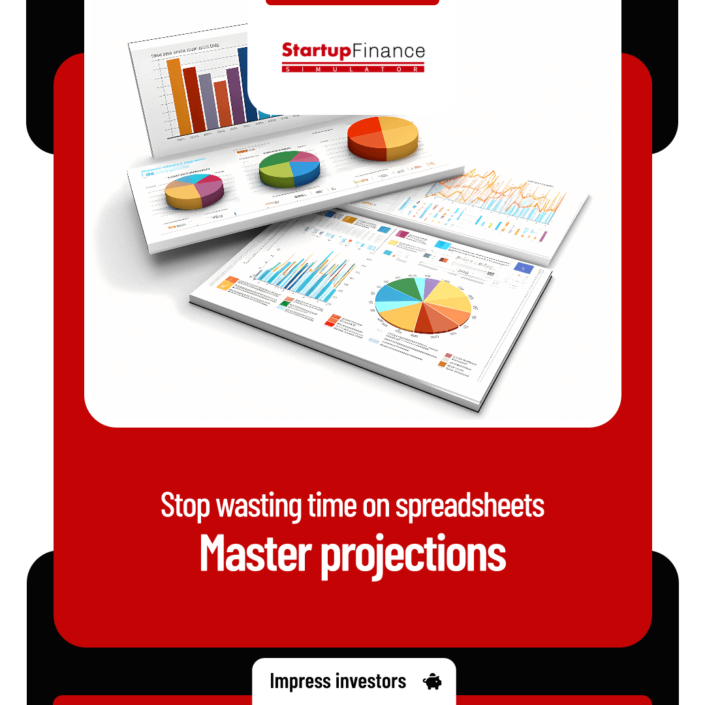Pitch Deck Alert: 10 Critical Mistakes You Can’t Afford to Make
Embarking on the startup journey is exhilarating. You’ve nurtured an idea, seen it grow, and now it’s time to present it to the world, or more specifically, to potential investors. Your pitch deck is your golden ticket, the bridge between your dream and its realization. But, like all things pivotal, it’s fraught with potential pitfalls. Let’s dive into the ten most common mistakes first-time founders make in their pitch decks and how to avoid them.
1. Overloading with Information:
The Mistake: Your pitch deck is bursting with details, making it more of a novel than a concise presentation.
The Fix: Remember, your pitch deck is a teaser, not an encyclopedia. Focus on the essentials: the problem, your solution, the market size, business model, traction, team, and financials. Leave the deep dive for follow-up meetings.
2. Neglecting the Problem Statement:
The Mistake: Jumping straight to the solution without adequately defining the problem.
The Fix: Investors need to understand the pain point you’re addressing. Start with a relatable story or statistic that highlights the problem’s magnitude. Make them feel the pain before offering relief.
3. Lack of Market Research:
The Mistake: Making broad claims about your market without data to back it up.
The Fix: Showcase your understanding of the market. Use credible sources to present data on market size, growth rate, and trends. Highlight the opportunity but stay grounded in reality.
4. Ignoring the Competition:
The Mistake: Claiming you have no competitors or glossing over them.
The Fix: Every business has competitors. Identify them and create a comparison matrix. Highlight where you stand out, but also acknowledge areas where you aim to improve. It shows maturity and awareness.
5. Overcomplicating the Solution:
The Mistake: Presenting a solution so intricate that investors can’t grasp it.
The Fix: Simplify. Use layman’s terms. If your grandma wouldn’t understand it, it’s too complex. Visual aids, like flowcharts or diagrams, can be invaluable here.
6. Being Vague About Monetization:
The Mistake: Not clearly defining how your startup will make money.
The Fix: Investors are looking for a return on their investment. Clearly outline your revenue model, pricing strategy, and sales projections. If you have current revenue, flaunt it!
7. Overlooking the Team Slide:
The Mistake: Not giving due importance to the team behind the startup.
The Fix: Investors don’t just invest in ideas; they invest in people. Highlight key team members, their expertise, and previous successes. Show them why your team is the best fit to execute this vision.
8. Unrealistic Financial Projections:
The Mistake: Projecting exponential growth without a grounded strategy.
The Fix: Be optimistic, but realistic. Base your projections on data, market trends, and clear growth strategies. And always be prepared to justify your numbers.
9. Missing the ‘Ask’:
The Mistake: Not being clear about what you’re asking from investors.
The Fix: Clearly state how much funding you’re seeking, how you plan to use it, and what investors will get in return. Whether it’s equity, convertible notes, or something else, be transparent.
10. Neglecting Design and Flow:
The Mistake: An unorganized, cluttered, or visually unappealing pitch deck.
The Fix: Design matters. Use a clean layout, high-quality visuals, and a logical flow. If design isn’t your strength, consider hiring a professional or using pitch deck templates available online.
In Conclusion:
Crafting a compelling pitch deck is both an art and a science. It’s about striking the right balance between passion and pragmatism, vision and validation. As a first-time founder, the journey might seem daunting, but remember, every setback is a setup for a comeback. Learn from these common pitfalls, refine your approach, and step into the investor meeting with confidence. Your dream deserves nothing less. Happy pitching!




















